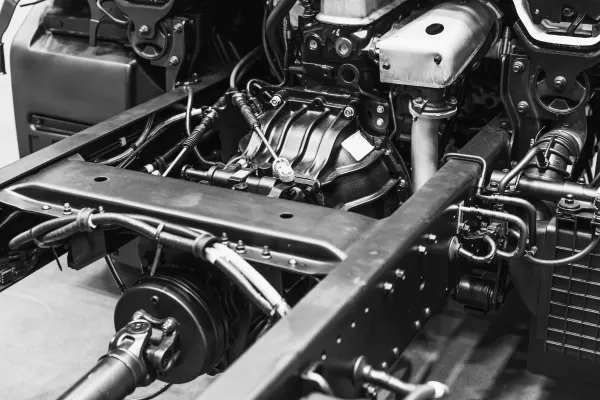Where to Discover Qualified Used Engines for Sale for Any Type Of Make or Version
Where to Discover Qualified Used Engines for Sale for Any Type Of Make or Version
Blog Article
Crucial Factors To Consider for Guaranteeing Top Quality and Long Life being used Engines
When thinking about the acquisition of an utilized engine, ensuring its high quality and long life calls for a multifaceted strategy. Upkeep history is a crucial factor, as it supplies insight into the engine's past care and prospective future integrity. Beyond paperwork, a detailed inspection of physical components-- such as belts, hoses, and seals-- can reveal surprise issues. Performance screening is additionally crucial, supplying a photo of the engine's functional effectiveness. Understanding the nuances of these evaluations and their effects can be complicated. What are the crucial techniques that can be employed to browse this elaborate examination process effectively?
Engine History Assessment
In the world of used engines, a thorough engine background evaluation is critical to making sure top quality and reliability. Recognizing an engine's past can offer important understandings into its performance abilities and potential future longevity.
Additionally, assessing any history of repairs or substitutes is important. Engines that have undertaken significant repair work may have underlying problems that might resurface. Recognizing the context of such repair work, whether due to producing flaws or proprietor neglect, is crucial in creating an extensive analysis. Checking out the engine's gas mileage can serve as a sign of wear and tear. Lower mileage engines are usually better, yet it is likewise vital to take into consideration just how those miles were gathered. An engine utilized largely for long-distance highway driving may remain in better problem than one subjected to frequent stop-and-go city traffic.
Essentially, an exhaustive investigation right into an engine's history is essential for making educated investing in decisions. used engines for sale.
Comprehensive Inspection Overview
While understanding an engine's history gives useful context, a thorough assessment is the next step to guarantee its existing condition aligns with historical data. The examination needs to begin with an aesthetic evaluation, checking for signs of leakages, rust, and unusual wear. Examine the outside for oil discolorations or coolant marks, which may suggest underlying concerns.
Next, review the engine's mounting system for any loose bolts or irregularities that might impact performance. Pay very close attention to the condition of belts and hoses, as these components are important for optimum engine capability. Check out for fractures, fraying, or any type of signs of damage.
Identifying Use and Tear
Recognizing indicators of deterioration is important for examining a made use of engine's longevity and dependability. It includes a precise evaluation of various engine parts to establish their current state and potential future efficiency. Typical indications include noticeable deterioration, which can impact metal components and jeopardize structural stability. Corrosion on or around the engine block, cyndrical tube heads, and exhaust manifolds is particularly concerning.
Another critical element is checking the engine's seals and gaskets. These elements are essential for maintaining proper stress and stopping liquid leakages. Evidence of oil leaks or worn gaskets usually suggests damage, possibly causing extra severe problems if not addressed without delay. Furthermore, uncommon noises during engine operation, such as knocking or ticking sounds, may show interior damage or extreme endure moving parts like pistons or bearings.
The condition of belts and tubes is similarly important, as they play an important role in the engine's overall feature. Cracked or torn belts and weak pipes are indicators of maturing that might cause engine failure if neglected. Taking a look at the oil condition and filter can provide insights right into previous upkeep practices, as filthy oil or clogged filters recommend forget and increased wear.
Efficiency Screening Fundamentals
Reviewing the wear and tear of engine components sets the stage for a comprehensive assessment with performance testing. Efficiency testing serves as a crucial measure in figuring out the operational integrity of an utilized engine.
Making use of dynamometers is an usual method in efficiency screening. These devices measure the engine's outcome throughout numerous conditions, using a detailed profile of its capability. Furthermore, on-road screening matches dynamometer evaluations by observing engine behavior under typical driving scenarios, ensuring it try these out meets the called for standards for both safety and security and performance.
These devices examine engine management systems, identifying faults in electronic parts that can impact efficiency. Comprehensive screening not just verifies the engine's functional condition yet additionally aids in projecting future maintenance demands.
Upkeep and Care Tips
Proper upkeep and care are crucial to prolonging the lifespan of a used engine and guaranteeing its regular efficiency. Normal oil modifications are extremely important; utilizing the manufacturer's advised oil type and grade can protect against too much deterioration. In addition, oil filters ought to be changed simultaneously to preserve optimum lubrication and sanitation within the engine.
Keeping track of fluid degrees, consisting of coolant, transmission fluid, and brake fluid, is important. Ensuring these liquids are at ideal degrees aids avoid getting too hot and other mechanical problems. Evaluating belts and hose pipes for indicators of wear, such as fractures or fraying, can avoid prospective failures that might bring about expensive fixings.
Regular inspection of the air filter is additionally essential, as a clean filter makes certain efficient air flow and burning, thereby maximizing engine performance. Spark plugs need to site here be checked and replaced when needed to keep effective gas burning and stop engine misfires.
Finally, routine analysis checks utilizing expert tools can identify possible issues before they become considerable problems. By sticking to these maintenance and care tips, utilized engine proprietors can guarantee their engines remain trustworthy, reliable, and with the ability of performing well over an extensive duration.
Conclusion

Report this page